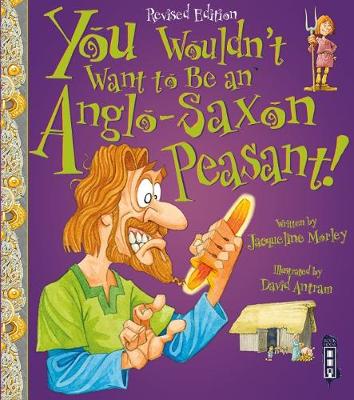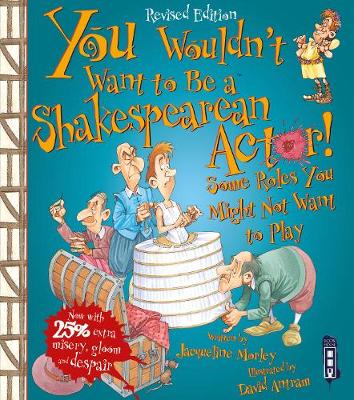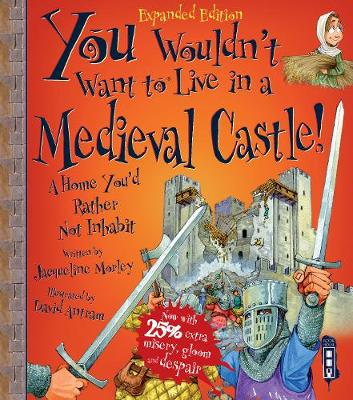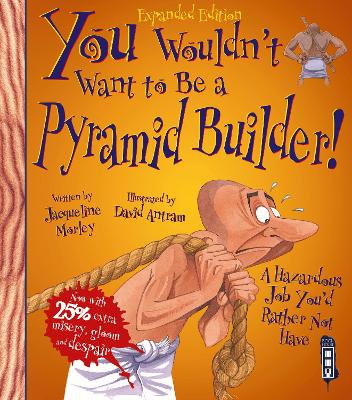You Wouldn't Want To Be
6 total works
You’re a farmer’s son living in England in the early 7th century. Your people are descendants of invaders from Northern Europe: the Angles, the Saxons and the Jutes, who arrived about 200 years earlier, seized land from the native Britons and made themselves at home here. You will experience first-hand the culture and history of the Anglo-Saxon peoples, including how they survived, ate and dressed, the stories they told, and how they responded to the coming of Christianity.
In 16th century London, you start work as an actor at William Shakespeare's theatre, but soon realise it won't be easy. It'll take an excellent memory, a penchant for wearing dresses and a keen eye for avoiding rotten vegetables. But against all odds, you could do well here...just watch where you're pointing that cannon! Humorous illustrations bring the characters to life, while informative captions explain processes or chronological events. Each spread comes complete with a Handy Hint box, offering a clever tip on how to survive whatever ghastly situation you've found yourself in. A glossary and index featured in every title makes the "You Wouldn't Want To Be" series an ideal introduction to the conventions of non-fiction texts for young readers.
You Wouldn't Want to Be in Alexander the Great's Army!
by Jacqueline Morley
Published 1 October 2005
You're a country girl in 13th-century England and there's trouble ahead. The year is 1215 and King John is in a power struggle with his barons, lords of Norman-French descent. The king has been forced to sign an agreement with the barons - the Magna Carta - which gives them the right to overrule the king. But John shows no sign of sticking to the agreement. When some of the angry barons rebel, you find yourself caught up in a terrible siege.
The humorous cartoon-style illustrations and the narrative approach placing readers at the centre of the narrative history encourage readers to get emotionally involved with the characters, aiding their understanding of what life would have been like in a medieval castle. Informative captions, a complete glossary and an index make this title an ideal introduction to the conventions of non-fiction texts for young readers.
Sample fact: 'Spiral stairs must turn clockwise. That gives you elbow-room (if you're right-handed) to swing your sword against an attacker climbing up towards you.'
The humorous cartoon-style illustrations and the narrative approach placing readers at the centre of the narrative history encourage readers to get emotionally involved with the characters, aiding their understanding of what life would have been like in a medieval castle. Informative captions, a complete glossary and an index make this title an ideal introduction to the conventions of non-fiction texts for young readers.
Sample fact: 'Spiral stairs must turn clockwise. That gives you elbow-room (if you're right-handed) to swing your sword against an attacker climbing up towards you.'
The humorous cartoon-style illustrations and the narrative approach encourage readers to get emotionally involved with the characters, aiding the understanding of everyday life and religion in Ancient Egypt and the building techniques used for such monumental structures. Informative captions, a timeline, a map, a comprehensive glossary and an index make this title an ideal and fun introduction to the conventions of non-fiction texts.





